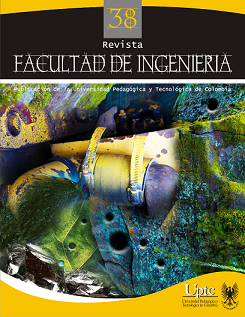Integración de un sistema de neuroseñales para detectar expresiones en el análisis de material multimedia

Resumen
Presenta los avances realizados en la integración de un dispositivo comercial de bajo costo para capturar neuroseñales, con el fin de registrar expresiones de un usuario de material multimedia. Todas las personas adoptan diversos tipos de expresiones al ver televisión, películas, comerciales u otros textos. Ejemplos de estas expresiones son: apretar los dientes en escenas de suspenso, mover la cabeza hacia atrás cuando se da la sensación de arrojar un objeto hacia fuera de la pantalla en películas 3D, desviar la mirada en las escenas de terror, sonreír en comerciales emotivos, dar carcajadas en escenas de humor, e incluso quedarse dormido por el desinterés. La idea general de este sistema es capturar todas estas expresiones en conjunto, con señales emotivas tales como el nivel de atención, frustración y meditación, para que los expertos en creación del material multimedia puedan realizar un análisis y mejorar sus productos. Se presentan pruebas experimentales que evidencian el buen funcionamiento del sistema.
Palabras clave
Neurociencia, Multimedia, Procesamiento de señales, Expresiones
Citas
- L. M. Keefe, “What Is the Meaning of Marketing?” Marketing News, pp. 17-18. Sep. 15, 2004.
- G. Du-Jian, L. Wang, Q. Zheng, Y. Liu-Li, “Neuromarketing: Marketing through Science”, International Joint Conference on Service Sciences (IJCSS), pp.285-289. Mayo, 2012.
- M. Soleymani, G. Chanel, J. J. Kierkels, T. Pun, “Affective Characterization of Movie Scenes Based on Multimedia Content Analysis and User’s Physiological Emotional Responses”, ISM 2008. Tenth IEEE International Symposium on Multimedia, pp.228-235, 15-17 December, 2008.
- K. Yaomanee, S. Pan-ngum, P. I. N. Ayuthaya, “Brain signal detection methodology for attention training using minimal EEG channels”,10th International Conference on ICT and Knowledge Engineering (ICT & Knowledge Engineering), pp. 84-89, Nov. 21-23,2012.
- H. Kiwan, K. Jeonghun, L. Hyeongrae, P. Jinsick, C. Sangwoo, K. Jae-Jin, K. In Young; S. I. Kim, “Measurement of Expression Characteristics in Emotional Situations using Virtual Reality”, IEEE Conference on Virtual Reality (VR 2009), pp. 265, 266, March14-18, 2009.
- I. A. Oz, M. M. Khan, “Efficacy of biophysiological measurements at FTFPs for facial expression classification: A validation”, IEEE-EMBS International Conference on Biomedical and Health Informatics (BHI), pp.108-111, January 5-7, 2012.
- Z. Ren, X. Qi, G. Zhou, H. Wang, “Exploiting the Data Sensitivity of Neurometric Fidelity for Optimizing EEG Sensing”, Internet of Things Journal, IEEE , no. 99, pp. 1-11, 2014.
- Y. Chih-Chin, J. T. Huang, “The era of Cloud Computer thru bio-detecting and openresources to achieve the Ubiquitous devices”, IEEE International Conference on Consumer Electronics (ICCE), pp.580-583. January, 2012.
- L. Grimaldi, “Measuring the Efficacy of Advertising Communication with Neuroscience Methods: An Experiment Performed by Telecom Italia”, Pulse, IEEE, vol. 3, no. 3, pp. 48-52. May 2012.
- C. Chuan-Yu, L. Yu-Mon, Z. Jun-Ying, “Physiological Angry Emotion Detection Using Support Vector Regression”,15th International Conference on Network-Based Information Systems (NBiS), pp.592-596. Sep. 2012.
- H. Touyama, “Post-saccadic event related potential toward a new technique for information retrieval”, IEEE International Conference on Systems, Man, and Cybernetics (SMC), pp. 2939-2942. Oct. 2012.
- R. Ohme, M. Matukin, “A Small Frog That Makes a Big Difference: Brain Wave Testing of TV Advertisements”, Pulse, IEEE, vol. 3, no. 3, pp. 28-33. Mayo, 2012.
- M. Eid, A. Fernández, “Read Go Go!: Towards real-time notification on readers’ state of attention”, XXIV International Symposium on Information, Communication and Automation Technologies (ICAT), pp.1-6. Nov. 2013.
- J. Katona, I. Farkas, T. Ujbanyi, P. Dukan, A. Kovari, A., “Evaluation of the NeuroSky MindFlex EEG headset brain waves data”, IEEE 12th International Symposium on Applied Machine Intelligence and Informatics (SAMI), pp. 91-94, January 23-25, 2014.
- W. A. Dijk, W. van der Velde, W. J. M. Kolkman, H. J. G. M. Crijns, K. I. Lie, “Integration of the Marquette ECG management system into the Department Information System using the European SCP-ECG Standard”, Computers in Cardiology, pp.397-400, Sep.10- 13,1995.
- H. Boutani, M. Ohsuga, “Applicability of the ‘Emotiv EEG Neuroheadset’ as a user-friendly input interface”, 35th Annual International Conference of the IEEE Engineering in Medicine and Biology Society (EMBC), pp.1346-1349, Jul.3-7, 2013.
- K. Holewa, A. Nawrocka, “Emotiv EPOC neuroheadset in brain- computer interface”, 15th International Carpathian Control Conference (ICCC), pp.149-152, May28-30, 2014.
- K. George, A. Iniguez, H. Donze, “Automated sensing, interpretation and conversion of facial and mental expressions into text acronyms using brain-computer interface technology”, Proceedings of 2014 IEEE International Conference on Instrumentation and Measurement Technology (I2MTC), pp.1247-1250, May 12-15, 2014.